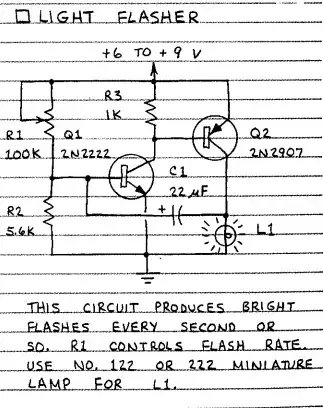I understand that
- R1 and R2 make a voltage divider.
- initially Q1 is not conductive, so is Q2?
- initially C1 acts as short circuit, so flashes the light L1 for a moment?
Please correct me if wrong. Can someone breakdown this circuit step by step? Is there an easy analogy to solve such combinational transistor circuits generally?
credits: referred from the book "Getting started in Electronics" by Forrest M Mims
